A Journey Into California's BLM Lands with Josh Jackson
How a camping trip inspired a tribute to some of the most exceptional and least-visited public lands in California
I first noticed Josh Jackson on his Instagram account, Forgotten Lands Project. Back when Instagram was focused on actual photography, Josh’s eye for the beauty of natural places was captivating—but so were his stories about all of these places. It helped, too, that he was focusing on Bureau of Land Management lands within the state of California—places that tend to fly under the radar of folks who tend to target national and state parks first.
A while later, I was stoked to hear he was thinking of compiling his travels into a book format, and even more thrilled to learn he got in with the folks at Heyday, who have published some really fascinating and exceptional books about California.
Josh was supremely kind enough to recommend some must-see BLM spaces when I took a Roadsurfer Van around Southern California for a week, and now I am excited that his book The Enduring Wild: A Journey Into California’s Public Lands is coming out this June. You can pre-order directly from his website (and get a set of postcards, too!)
I had a chance to read portions of an advance copy this week and, well, I’ll just say that if you like this newsletter, you’re really going to love this book. The photography is gorgeous, and the writing is powerful and moving. There’s a true reverence for these spaces, but also a concern and a deep love, as well as an open invitation to experience them for yourself. You’ll see what I’m talking about once you get to some of Josh’s answers here.
Josh also launched a brand new Substack that’s worth checking out, too.
Josh was kind enough to answer a bunch of questions about this project … and because his answers are so thoughtful and in-depth, I’ve decided to just make this the whole newsletter, open to all subscribers. Feel free to share, and I hope you enjoy!
What made you want to write a book about BLM land in particular?
My obsession with BLM land started back in 2015 when I first discovered them on a camping trip to the Trona Pinnacles with my kids. Even as an avid hiker, camper, and nature lover, I knew very little about the 245 million acres managed by the Bureau of Land Management across the American West. That trip changed everything.
I started reading, researching, and learning as much as I could, only to find that most of the information was rather dry and, lets just say, less than compelling. And for most of the landscapes, the imagery either didn’t exist or was hopelessly outdated.
Even before I really started traveling around California to visit BLM lands in 2020, I wondered if a book featuring essays and photographs was a possibility. I couldn’t believe one didn’t exist!
The more time I spent on these landscapes, walking, camping, and talking to people, they initiated a transformation within me as an outdoors person. Writing became a way to listen, to understand everything I was thinking and learning.
Learning about their vulnerability became the catalyst for doing everything I could to make a book happen. Unlike our national parks, which have a built-in constituency, BLM lands exist in a kind of anonymity — overlooked, misunderstood, and often treated as expendable. Their lack of visibility makes them easy targets for mining, drilling, and efforts to strip them of protections.
As I traveled across California’s BLM lands, I kept coming back to Baba Dioum’s words: “In the end, we will conserve only what we love.” But how can we expect people to love and protect places they don’t even know exist?
The anonymity that once shielded these landscapes now works against them.
The Enduring Wild book is my attempt to bring people into these places — through stories, photographs, and maps that reveal their beauty, history, and diversity. These lands don’t need more anonymity. They need advocates.
How did this grow from your pre-existing Instagram project?
The Forgotten Lands Project on Instagram started as a way to simply document what I was seeing as I explored BLM lands. But as I shared photos and long-form captions, I quickly realized how little people knew about BLM lands.
But, of course, social media is fleeting, and I wanted to go beyond quick posts and scrolling feeds to create something more immersive. In the book, I write a lot about the act of paying attention, how these landscapes reveal themselves slowly over time. A book allows for that kind of slowness, that kind of presence.
I spent several months crafting a proposal and sent it to five publishers. Heyday Books was always my first choice, and I’m grateful they saw the value in these stories and the idea of blending narrative with photography to bring these landscapes to life.
The Mojave was your first stop on this journey — are you a desert person or was this proximity or both?
In practical terms, the Mojave was my first stop for one simple reason: It’s the closest BLM land to my home in Los Angeles.
But I’ll admit — I wasn’t a desert person. Outside of Joshua Tree and Death Valley, I saw the rest of the Mojave as a Drive-By-Desert: a place you passed through on the way to somewhere else. Even on my first trip to explore BLM lands in the Mojave, I felt underwhelmed. As I wrote in the book:
"Looking at the arid landscape, I was awestruck by the sheer scale of barrenness. Words describing the scene spun through my mind like a thesaurus entry. Bleak. Austere. Infertile. Empty. Forsaken. Everything appeared to be running on repeat: rocks, sand, shrubs, and mountains, an endless array of the same muted colors and interchangeable rock formations.”
Of course, as those who know the desert best, these sentiments didn’t last. Over the course of writing this book, I made 19 trips to BLM lands in the desert, sleeping 55 nights under the stars, and walking more than 200 miles along the way. The beauty and majesty of the desert often requires a conscious slowing down — a kind of noticing. My trips began to feel like a pilgrimage.
What I once saw as empty, I came to recognize as teeming with life. After four winters of wandering, I wrote:
"But the desert invited me to leave behind my notions about what I might find or experience, or even how I might feel. A person can go looking for this or for that, whatever it is they have in mind, but the desert doesn’t always give you an explosion of grandeur. Holiness here is not a rapture; it is a whisper, reminding you that everything you need to see is around you at every moment.”
The section on the Carrizo Plain really showcases how these landscapes can be vastly different at different times of the year / different weather conditions. How many times did you have to revisit places for those perfect conditions?
Perhaps more than any other BLM landscape in California, the Carrizo Plain undergoes a stunning transformation with the seasons!
In autumn, the fifty-mile-long valley floor looks like a giant bale of hay —crispy, brown, and choking with dust. Wildflowers are long gone, and even the animals seem to retreat to cooler elevations. Soda Lake, which sometimes fills in spring, is nothing more than a white, calcified basin baking in the sun. I still loved it for the solitude — I didn’t see a single person on a November camping trip.
And then 2023 happened. Thirteen inches of rain fell in four months, triggering a March Miracle — the legendary Superbloom. The landscape I had seen just months before was unrecognizable:
“The landscape was so incomprehensibly different I couldn’t help but stare in disbelief. Soda Lake Road had become a yellow brick road, and I had wandered into the Land of Oz. I couldn’t figure out where to look, as if my eyes and brain had gone haywire into a hyper state of mesmerizing distraction that left me utterly speechless. It was like taking Dorothy’s first step into the technicolor world of Munchkinland after living in sepia-toned Kansas.”
I visited the Carrizo four different times, capturing it in both drought and abundance. Some places — like BLM lands in the Desert, Eastern Sierra, and King Range National Conservation Area — required multiple trips across different seasons to fully capture them. Fortunately, my family and friends love camping in these landscapes as much as I do, so I wasn’t always alone.
One of your chapters goes into a hunting expedition in the desert. Did you learn anything surprising from hunters and anglers on this project?
Before starting this book, I carried a lot of preconceived notions about hunters. I naively wondered if they were primarily focused on the pursuit of game, with little regard for biodiversity, sustainability, or ecosystem health. I also couldn’t shake the memory over the legacy of market hunting in the 1800s, when the unchecked slaughter of wildlife drove many species to the brink of extinction.
But as I researched, read, and listened, my perspective began to shift. I came to realize that hunters and anglers have long been some of the most dedicated conservationists, volunteers, and public lands champions. I wanted to include their story in the book, so I asked a couple of hunting friends if I could join them on a three-day mule deer hunt in the Chemehuevi Wilderness. It didn’t take long for me to gain a new perspective.
Hunting demanded complete ecosystem awareness. Hunting forced me to pay attention in a way I never had before — to read the land with a heightened sense of its rhythms and interconnections.
You’ll have to read the book to find out how the hunt ended, but I will say this: I walked away with a deeper understanding of how hunting connects people to place — not as conquerors, but as participants. We will only conserve what we love, said Dioum. And for some, love for the land comes not just from walking through it, but from being woven into its story.
Sometimes working on a project like this, the joy can become work — all these amazing destinations can just become mileage and planning. Were there any places that kind of knocked you back into the focus of the beauty of these landscapes?
I’ll be honest — none of these trips ever felt like work (unless you count all the mornings I woke up at 4:30 a.m., packed up my camera gear in freezing temperatures, and set off from camp in the dark).
The real work was always back home — putting pen to paper, trying to shape sentences that could capture not just the magic of these landscapes, but the ways they were shaping me in return.
The book explores themes of pilgrimage, place attachment, reciprocity, and how these lands hold Indigenous histories — both in presence and in loss. It also reckons with the ways Native communities continue to fight for recognition and stewardship. Writing about these stories in a way that was both deeply researched and compelling was always the hardest part.
What was the toughest place to plan for?
For the final chapter of the book, I wanted to visit a federally designated Wilderness Area to grapple with a question that had been tugging at me throughout my five years traversing BLM landscapes - is a pristine wilderness somehow more valuable than other natural areas?
To explore this question, I chose the Elkhorn Ridge Wilderness, which lies in a remote stretch of Northwest California. It seemed like the perfect place to challenge some of the sentiments I had long held sacred — but getting there was another story. I called the local BLM field office and reached out to conservation orgs I had worked with, and not one person had ever even been there or knew much about it. I started to wonder if a visit was even possible until I noticed the Wilderness bordered a nature reserve.
The reserve’s manager granted me permission to enter through their land but warned me that it would be difficult - just reaching the Wilderness boundary required a seven-mile hike.
Once we arrived to the Elkhorn boundary, he told me, there were no trails, no bridges, no signage, and no infrastructure of any kind. The only way to experience it was by walking in the South Fork of the Eel River, which meandered through the Wilderness.
“Hopefully, the rains don’t come before you do,” the manager told me.
Planning for Elkhorn Ridge was the hardest logistical challenge of the book — but navigating through it turned out to be even harder.
What was the most surprising place you visited? The most surprising thing you learned?
The most surprising place I visited were the BLM lands along the Pit River in far northeast California. The river winds through a striking volcanic landscape shaped by ancient lava flows and the geologic upheaval of the Modoc Plateau. Towering basalt cliffs and rugged lava beds define much of the terrain. I had no expectations going in, but I was mesmerized.
After five years, three dozen trips, and more than four hundred miles of walking on BLM lands, the biggest lesson I’ve learned is that these places practically implore us to engage with them. Too often in nature, we visit, we admire, and then we leave.
“BLM lands, in contrast, summon a public land ethic that requires not just a more nuanced appreciation of beauty but a transformative perspective on our relationship with these lands … where the opportunity to recreate comes with an obligation to steward and care for these places in return, visiting them not as playgrounds or treasure boxes to plunder but as extensions of home.”
I believe that’s the real invitation these places offer: to shift our relationship with public lands from one of taking to one of giving. And BLM lands give us a chance to do more. We can give back — through volunteering, clean-ups, and advocacy — ensuring these places remain protected for future generations.
Given the current administration’s seeming disregard for public lands in general, are you concerned with some of the sites highlighted in the book?
Yes, absolutely. Another National Monument review is underway, which could weaken protections for places I write about. Meanwhile, mining threats loom over the Bodie Hills, Amargosa Basin, and Conglomerate Mesa, where industrial projects could leave lasting scars on fragile landscapes.
Beyond that, the now-dismissed Utah lawsuit, which sought to transfer 18.5 million acres of BLM land from federal protection to state control, was part of a broader effort to dismantle public lands as we know them. These movements — whether through direct privatization or transferring lands to the states — are still very much alive.
But I have hope in these landscapes. I named the book The Enduring Wild, because these BLM lands have somehow endured despite the odds being stacked against them. From the beginning, they were treated as the “leftovers” of the federal estate — not suitable enough for homesteaders, not profitable enough for developers, not scenic enough for National Parks, not forested enough for the Forest Service. They have withstood severe overgrazing, unchecked extraction, political battles, and neglect.
And yet -
“With the odds stacked against these lands, they have endured. They are essential not merely for ourselves but for the embrace they offer to the animal and plant kingdoms, for the sanctuaries of habitat and biodiversity they provide, for the ways they alleviate the impacts of a warming planet. In a world besieged by dissension, these lands can become refuges of sanity and solace, where present and future generations can find common ground, where our kids can feel the earth and watch the moon rise, and then have some stories to tell when they get home.”
My hope is that this book plays a small role in raising awareness — not just of their beauty, but of their immense ecological and cultural significance.
Pre-order The Enduring Wild here … and be sure to follow Josh’s new Substack for more great and thoughtful writing like this. It’s good stuff!
I’ll be back next week with the usual round-up. Until then, Happy Trails!





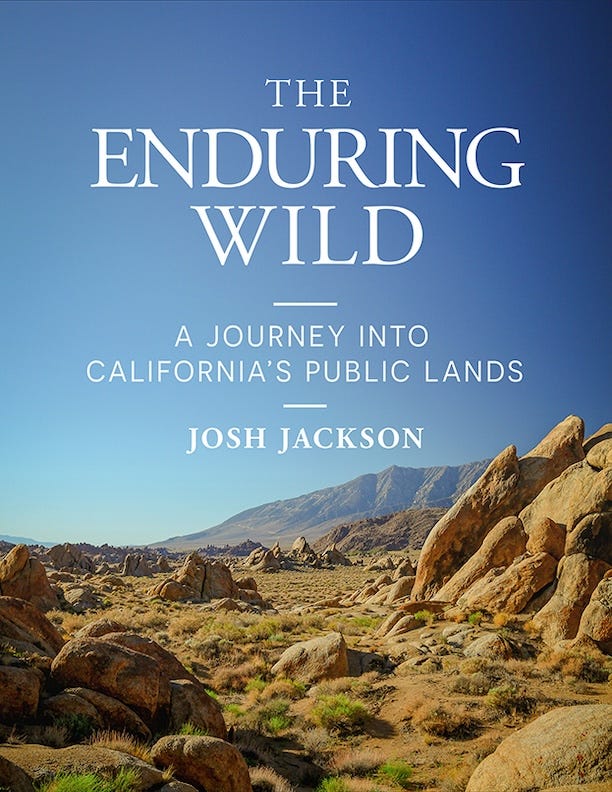

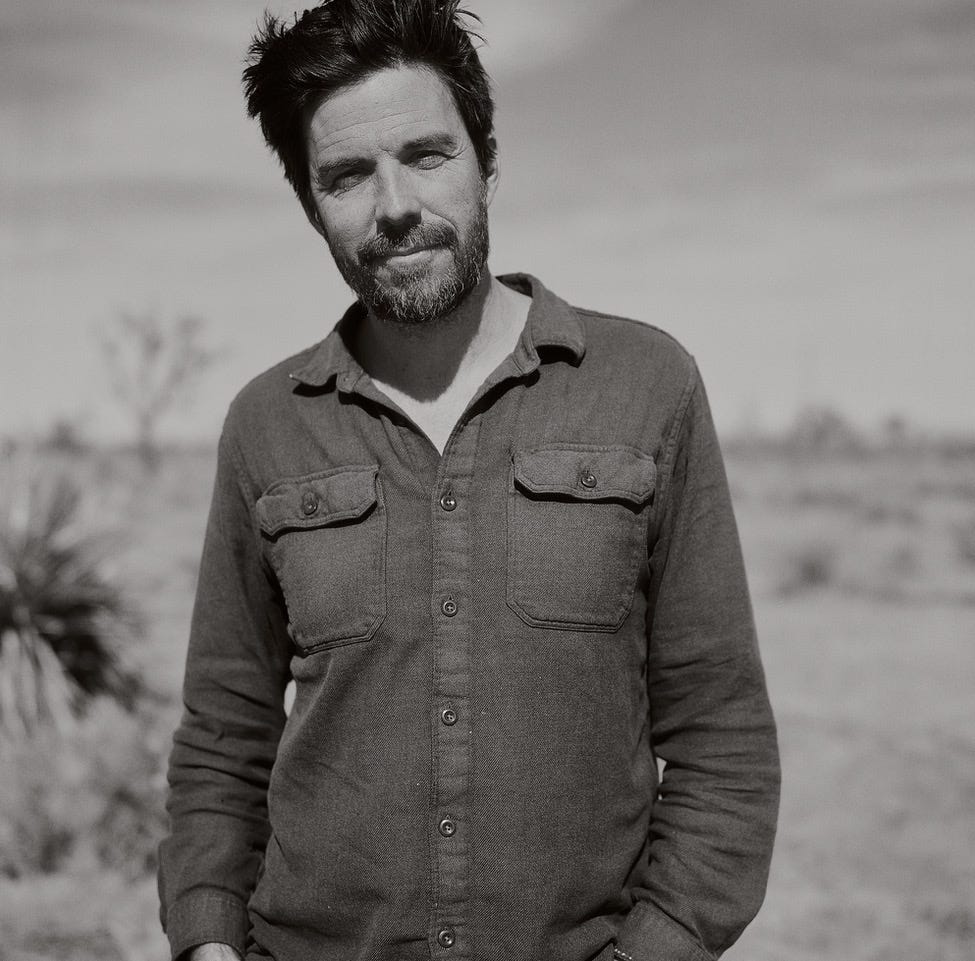



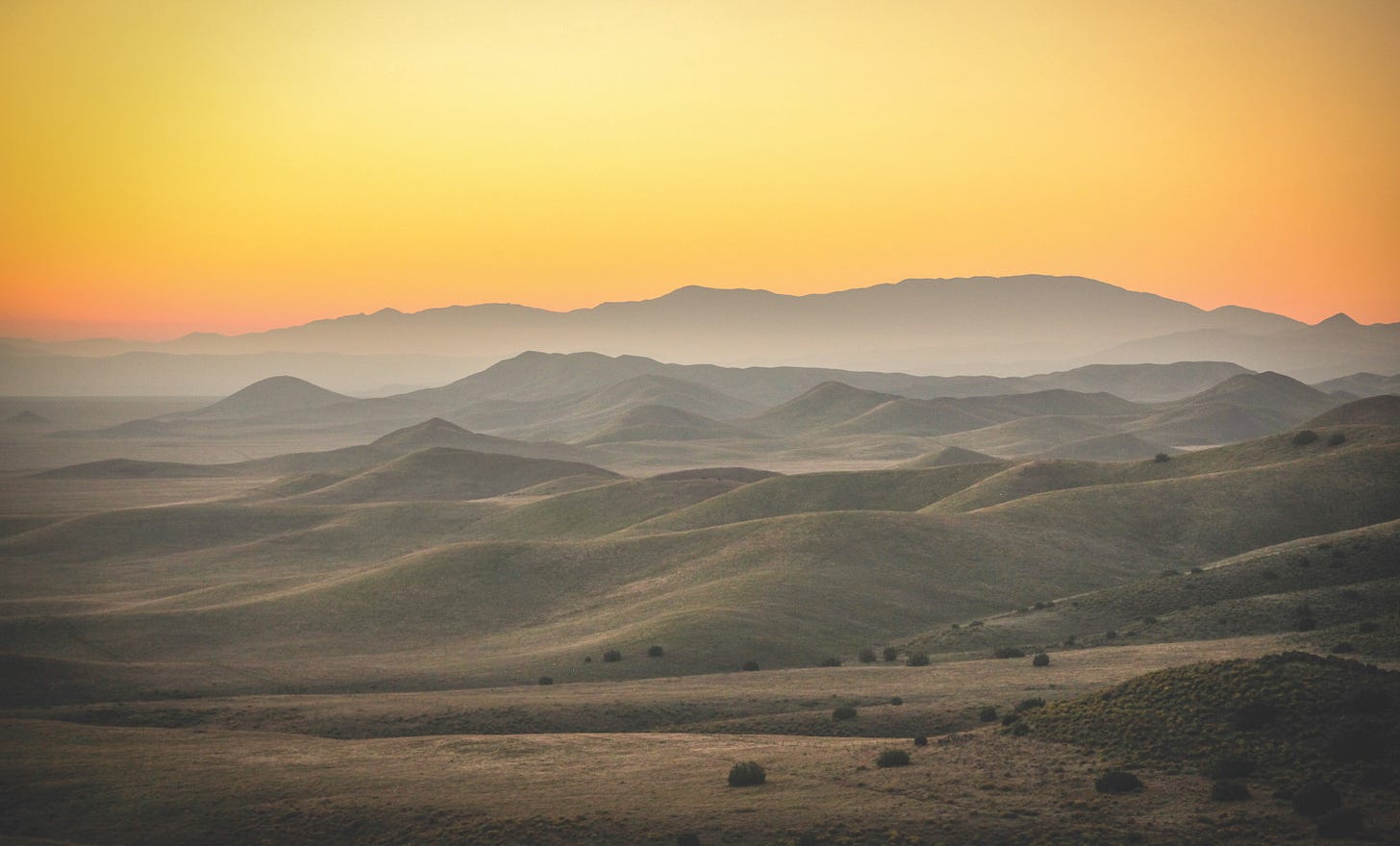
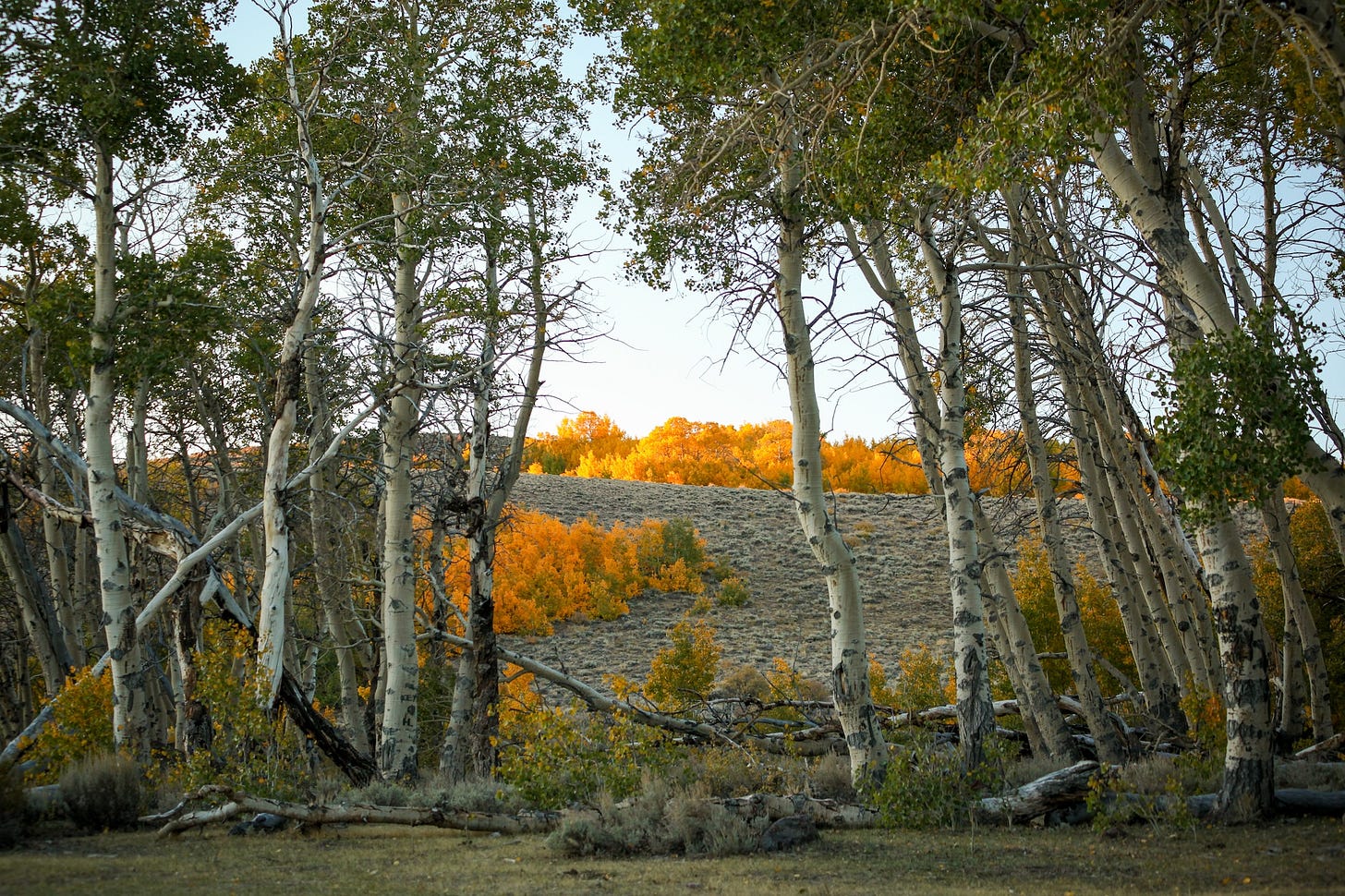


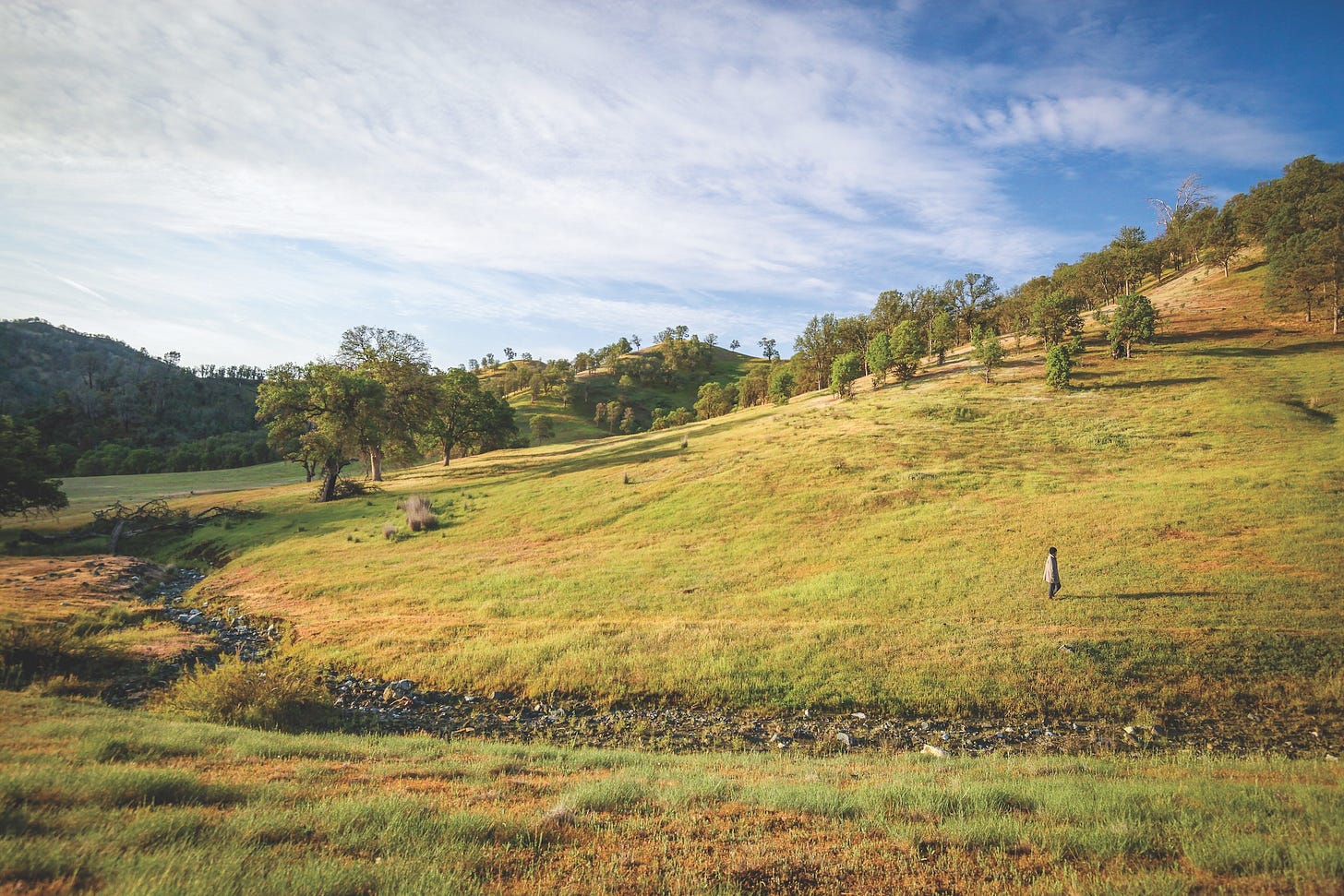
Instant order! Looks wonderful and inspiring. Thanks for telling us about it.
Thanks for all the kind words and for repping the book Casey!! Means so much to me. I hope readers enjoy the Q&A!